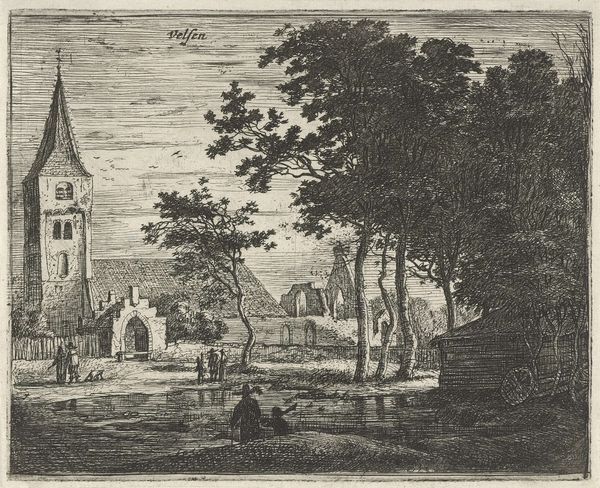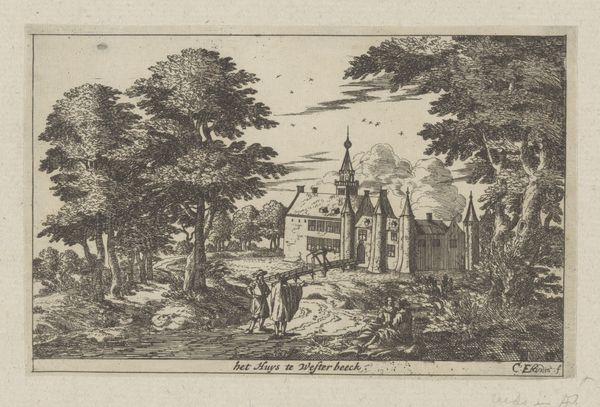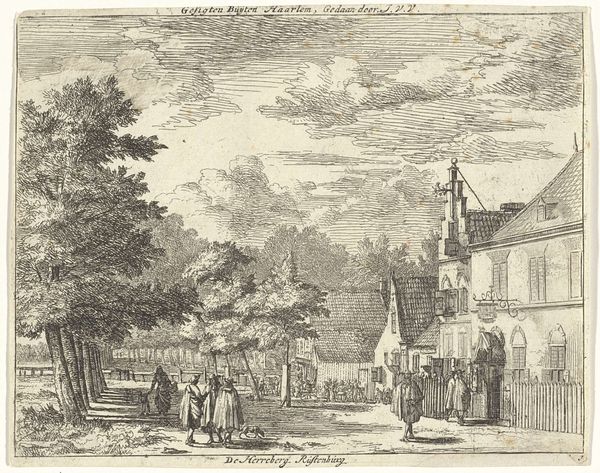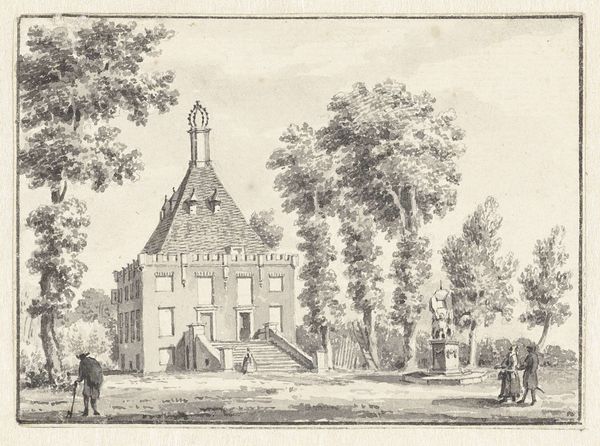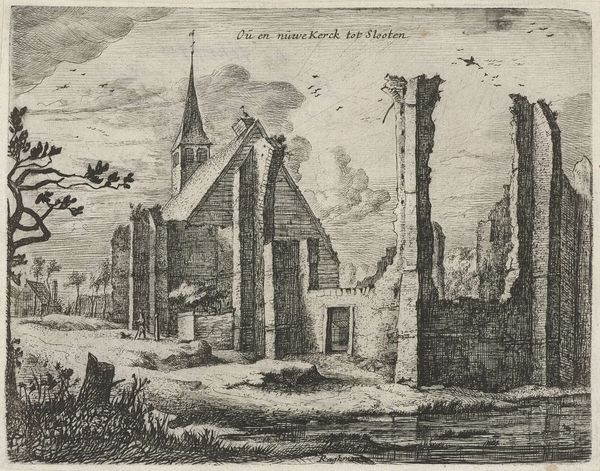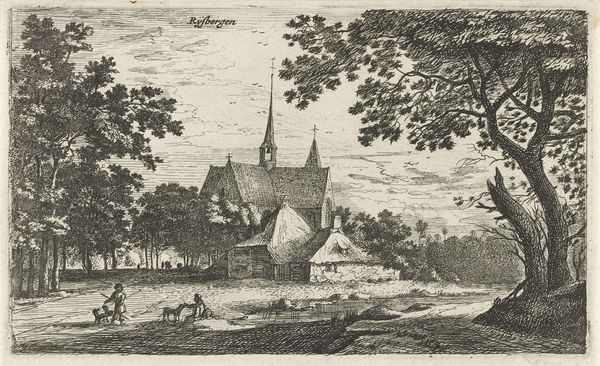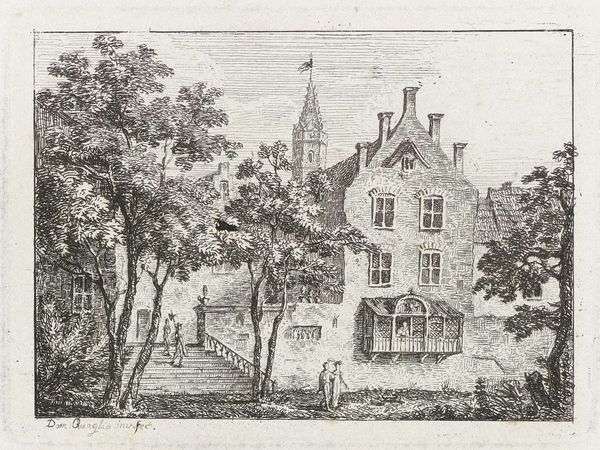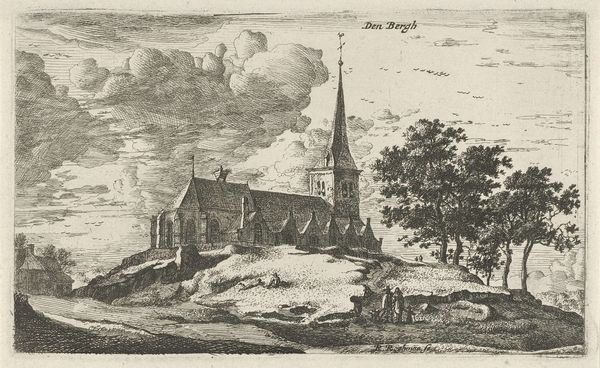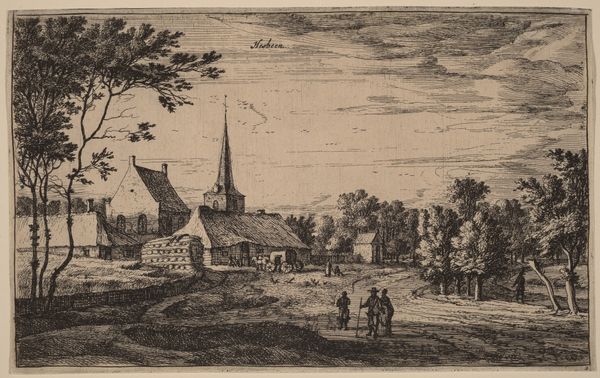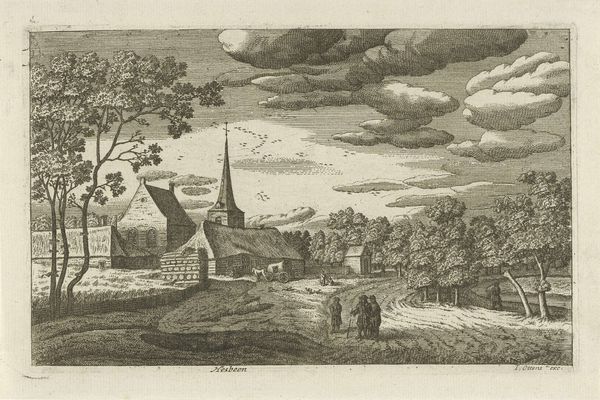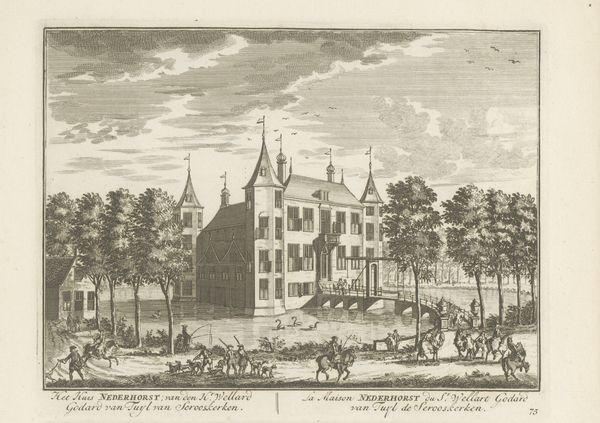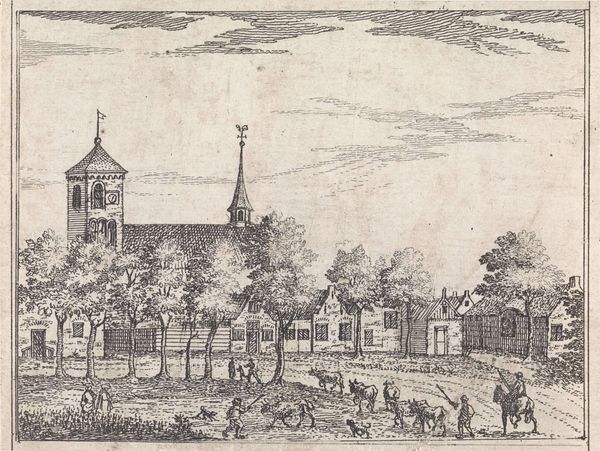
drawing, print, etching, paper, engraving
#
drawing
#
dutch-golden-age
# print
#
etching
#
landscape
#
paper
#
cityscape
#
engraving
Dimensions: height 133 mm, width 167 mm
Copyright: Rijks Museum: Open Domain
Curator: Right now we're standing in front of Roelant Roghman's "Kerk van Maarsseveen," an etching and engraving printed on paper sometime between 1637 and 1677. It's part of the Rijksmuseum's collection. What strikes you first about this piece? Editor: Hmm, the quietness of it. Even though there are figures scattered throughout the landscape, there's a real sense of stillness and introspection. Almost as if the church itself is observing, rather than being observed. Curator: I get that. The way the church looms, it's impossible to ignore. The etching is dominated by the church and the framing of the composition makes it almost like a watchful sentinel. It is such a carefully arranged image – there’s the solid mass of the church on the left, balancing with the open vista to the right, and all those tiny figures scattered in the foreground. Editor: The figures seem dwarfed by the architecture and the trees; however, that seems intentional. Maybe it emphasizes humanity's relationship to something larger. The church represents that idea, but then the tree echoes that. Curator: Yes, exactly. And that leads into ideas around symbolism, which feels very prominent here. What does this building represent? What meanings do we apply when Roghman creates such prominence and such architectural visual power? It reminds us of the influence that any kind of symbol, like the church, possesses. Editor: Absolutely. The church isn't just a building, but an idea—it can function as a cornerstone for identity and aspiration. Curator: I like that – aspiration. It is such an ordinary church and that detail almost allows for aspiration. In so many ways this piece prompts an openness and possibility through these different avenues of representation, both symbolic and actual. Editor: It leaves us pondering the enduring strength and cultural footprint of the architecture and symbolism around us. Food for thought. Curator: Agreed. And Roghman leaves us with just enough information that allows for a personal, open encounter, for sure.
Comments
No comments
Be the first to comment and join the conversation on the ultimate creative platform.
